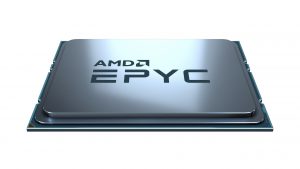“March to Milan”: New performance tuning guide for SUSE Linux Enterprise Server on AMD EPYC* 7003 Series processors
On March 15th, AMD released their next generation AMD EPYC™ 7003 Series of processors, known under the code name “Milan” during the development phase. The new processors provide outstanding performance across a wide spectrum of industry standard applications. Whether on bare metal or Hyperconverged Infrastructure (HCI), they power solutions in the Cloud, on-premises or off-premises, in containers, or virtual machines. Built on the “Zen 3” core and AMD Infinity Architecture, which was already introduced with the 2nd Gen AMD EPYC™ processors, they empower system builders and cloud architects alike to unleash the very latest in server performance without sacrificing power, manageability, or the ability to help secure their organization’s most important assets, its data.

New Performance Tuning Guide
Right in time for this important release, SUSE published a new performance tuning guide which provides an overview of the AMD EPYC™ 7003 Series processors, and how some computational-intensive workloads can be tuned on SUSE Linux Enterprise Server 15 SP2. This SUSE Best Practices document has been written by my heroic expert colleagues Dario Faggioli, Mel Gorman, and Martin Jambor, in close collaboration with Brent Hollingsworth from AMD.
Content
After introducing the architecture and topology of the 3rd generation of AMD EPYC™ processors, the document covers topics such as memory and CPU binding, high performance storage devices and interrupt affinity, automatic NUMA balancing, power management, security mitigations and hardware-based profiling. Going forward, you’ll learn how to use SUSE Linux Enterprise Server and the AMD EPYC™ 7003 Series processors for virtualization. In detail described are the allocation of resources and tuning options for the host and virtual machines. Best of all, the guide includes a couple of recent performance test scenarios plus benchmark results.
In short, with SUSE Linux Enterprise Server, all the tools to monitor and tune a workload are readily available. Customers can now easily extract the maximum performance and reliability running their applications on the 3rd Generation AMD EPYC™ processor platform.

To discover the whole truth, read the guide Optimizing Linux for AMD EPYC™ 7003 Series Processors with SUSE Linux Enterprise 15 SP2. And if you are a developer using the GCC compiler, you might also want to check out the SUSE Best Practices document Advanced Optimization and New Capabilities of GCC 10.
On our documentation web pages, you find many more SUSE Best Practices documents for a variety of topics. And if you want to write / contribute to a SUSE Best Practices paper yourself, write an email to the SUSE Documentation team at doc-team@suse.com or contact me directly (meike.chabowski@suse.com). Always happy to help!
Disclaimer: The text at hand has not been reviewed by a native speaker. If you find typos or language mistakes, please send them to me (meike.chabowski@suse.com) – or if you like them, just keep them and feed them. ![]()
Related Articles
Jul 22nd, 2022
SUSE Rancher Manages Amazon EKS Hybrid Landscape
Feb 15th, 2023
Ransomware Attacks – Part 3, Container Security
Jul 04th, 2022